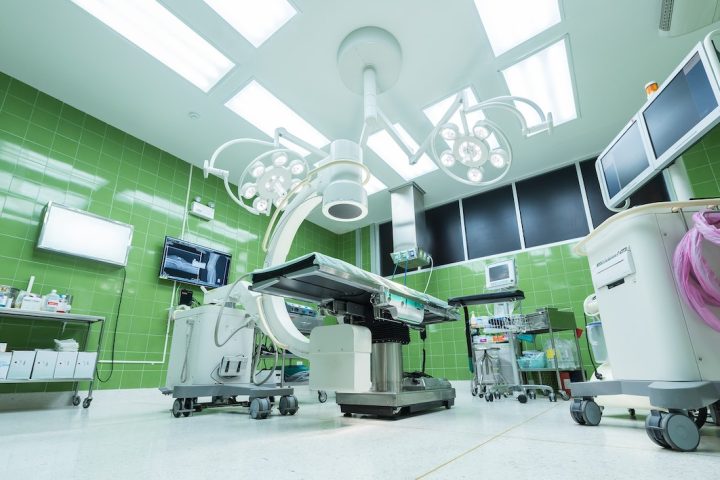The maintenance and management of essential tools in hospitals and healthcare facilities, including emergency equipment, medical devices, and biomedical equipment, has become increasingly complex in recent years. Today, hospitals and healthcare providers utilize sophisticated equipment to provide improved healthcare and a better patient experience. However, it can be challenging to plan for regular maintenance of these various medical devices to provide the best care for every patient.
Therefore, how can you ensure that your facility’s medical devices and equipment are running efficiently? How can you safeguard your patients’ safety and health? How can you avoid the costs of emergency repairs? Here’s all you need to know for effective healthcare performance management and medical equipment maintenance.
- What is Medical Equipment Maintenance?
- Why is Medical Equipment Maintenance Important?
- Understanding Medical Equipment Preventive Maintenance
- Why Medical Equipment Require Routine Maintenance
- Implementing and Maintaining Digital Technology in the Healthcare Industry
- The Importance of Managing Healthcare Technology
- Benefits of a Preventative Maintenance Plan for Patients and Healthcare Providers
- Effective Medical Equipment Maintenance and Management
Developing a Strategy for Medical Equipment Maintenance
Effective management and implementing a smart maintenance strategy are essential in reducing operating costs in the present and future. Knowledge is critical when it comes to medical equipment maintenance, and a well-designed plan can minimize repair expenses, equipment downtime, and safety risks for patients, healthcare consultants, and facilities alike.
To ensure that your hospital or healthcare facility runs smoothly, it’s essential to establish a service schedule for routine maintenance and repairs. This entails gathering information on the specific medical equipment used for regular procedures, as well as service contacts for any necessary repairs. By taking these steps, you can minimize unexpected downtime and ensure that your equipment is always in top condition.
What is Medical Equipment Maintenance?
Medical equipment maintenance is the routine inspection of all equipment and devices utilized in a hospital setting as recommended by the Original Equipment Manufacturer (OEM). Alterations to the recommended maintenance by the OEM are defined in the hospital’s Medical Equipment Maintenance Plan (MEMP). A MEMP ensures that all medical equipment used by technicians, doctors, surgeons, nurses, and other hospital staff functions as intended and safely.
Medical equipment maintenance can include routine maintenance schedules such as preventative maintenance, repairs to equipment that needs emergency service, or even equipment replacements and upgrades. Managing the multitude of devices and medical equipment used in a hospital or facility on a daily basis can seem like a daunting task. However, it’s crucial to ensure that you can maintain a high level of service, carry out routine procedures, and keep costs under control.
Why is Medical Equipment Maintenance Important?
According to a 2023 article from Med-Tech Outlook Magazine, reactive maintenance is considerably more expensive for hospitals and healthcare facilities than preventive maintenance. In addition, equipment failure can lead to costly repairs and have other unforeseen consequences, such as reduced efficiency and potential risks to patient safety.
Hospitals rely on a wide range of medical equipment, from state-of-the-art devices to older models, which are more prone to failure. That’s why it’s crucial to maintain all equipment on your premises to prevent critical emergencies and unexpected spikes in operating costs. Simply put, a robust preventive maintenance plan that detects equipment service needs before a breakdown occurs is much more valuable than scrambling for an emergency repair.
Fortunately, hospitals can now rely on experienced technicians and advanced technologies to manage preventive maintenance services. Despite the growing number of devices and specialized equipment available to hospitals, medical equipment maintenance outsourcing services have made managing maintenance easier than ever before.
Understanding Medical Equipment Preventive Maintenance
To ensure the proper functioning and longevity of your medical equipment, it is crucial to implement a strategic maintenance program. Your healthcare facility can benefit from the many resources available in the early stages of developing such a program.
Preventive medical equipment maintenance involves managing all the devices used in your facility and understanding when each device may require service. Asset management, or keeping track of all devices and equipment, is a great starting point. This is often managed through a computerized maintenance management system (CMMS), which can help categorize equipment and record important information such as make, model, unique identifiers, and warranty details.
Creating a preventive maintenance schedule based on the manufacturer’s recommendations is the next step, followed by documenting all service activities, whether preventive or corrective, to establish a service history for each device. By doing so, you can optimize the maintenance schedule based on service trends for each device.
It’s essential to take a high-level view of your maintenance plan and consider all the medical equipment currently in circulation. Also, don’t forget to evaluate each device for its interoperability since medical devices are often connected to other devices and the hospital’s network. Regularly reviewing and managing these connections and shared data is essential to provide excellent healthcare services.
Why Medical Equipment Require Routine Maintenance
Every medical equipment in a healthcare facility requires regular maintenance or repairs to adhere to regulations. Therefore, implementing medical equipment maintenance programs for all devices, including hospital beds and associated systems, is a crucial and customary aspect of operations. Skilled technicians can provide maintenance and required repairs for all equipment and devices, ensuring they are available and prepared to support the patient care environment.
Hospital Bed Maintenance & Repair
Hospital beds are crucial and extensively utilized medical equipment in a healthcare facility. Properly maintained hospital beds ensure the comfort and safety of every patient. With the advancement of technology, hospital beds are now more sophisticated than ever, providing security, support, and efficient communication between patients and medical staff.
A proper maintenance program is not only required by The Joint Commission, but preventive maintenance is also essential to ensure safe operations and to extend the lifespan of every hospital equipment. As a result, all hospital beds must be equipped with the proper and fully functioning safety tools, which can include the following features:
- control panels for both patients and caregivers
- side rails for patients’ safety and mobility support
- entrapment sensors
- quick release cabling
- adjustable settings that can control the bed’s height, mattress positioning, bed frames, and rails
- steering and locking mechanism for transportation
- bed exit alarm
- proper lighting
Caregivers, technicians, and staff must regularly inspect hospital beds to ensure that their healthcare facility follows all the regulations and safety protocols mandated by the FDA and other applicable regulatory organizations. The Department of Health and Human Services strongly recommends that only trained and qualified technicians service and maintain hospital beds. Emeritus offers an always-on-site service model to conduct repairs and ensures that all essential equipment is in top working order.
Stretcher Maintenance
Stretchers are frequently used medical devices in hospitals or healthcare facilities. However, they may not be inspected or maintained as often as necessary due to their emergency use, on-site deployment, and use by EMS technicians in the field. Therefore, it is critical to verify that all stretcher components function correctly to provide high-quality care and patient support. This includes ensuring the proper operation of restraints, buckles, and hardware, as well as the brakes and the stretcher’s ability to move smoothly in every direction.
Nurse-call System Maintenance
Nurse-call systems are a crucial technology in hospitals, providing patients with quick and efficient means of contacting medical staff anytime. Yet, despite their constant use, nurse-call systems are often neglected in terms of preventative maintenance management. Therefore, it is essential to perform regular testing and inspections to ensure that all components of the system, including pillow speakers, call buttons, pull cords, alarm devices, control stations, and call lights, are working correctly.
To maintain the proper functioning of the nurse-call system, it is necessary to include it in a preventative maintenance program. The program should include a nurse-call evaluation that checks each component’s performance. This way, patients can receive the right support when needed, from routine requests, such as restroom assistance for critical emergencies requiring immediate attention.
Routine Preventive Maintenance for Biomedical Equipment and Other Medical Devices
It is important to note that the list above of medical equipment that necessitates regular preventive maintenance is merely a fraction of the devices that require upkeep. Moreover, ensuring appropriate preventive maintenance is crucial for delivering optimal service quality to patients. Additional medical equipment that may require maintenance includes but is not limited to computerized equipment, biomedical equipment, specialized equipment, and numerous others. Therefore, a comprehensive maintenance approach must consider all equipment and devices. Thus, engaging an experienced partner to conduct an inventory, schedule, or perform preventive maintenance as required would be beneficial.
Implementing and Maintaining Digital Technology in the Healthcare Industry
Preventative maintenance strategies encompass hospital beds, stretchers, communications systems, as well as devices, apps, software, and other online tools employed by doctors, patients, and partners for efficient communication and patient care in the current era.
The COVID-19 pandemic led to the adoption of novel online tools by healthcare institutions for improved care with minimized in-person interaction. However, this convenience was accompanied by a significant surge in cyberattacks on the healthcare sector.
According to a report that examined data breaches reported to the U.S. Department of Health and Human Services (HHS) by healthcare organizations, cybersecurity breaches in 2021 reached a record high. The report revealed that the number of individuals affected by healthcare attacks in 2021 had risen to 45 million, which is an increase from 34 million in 2020. Additionally, the number of individuals affected by healthcare attacks had tripled in just three years, going from 14 million in 2018 to 45 million in 2021. Additionally, according to a report by Fortified Health Security, healthcare providers accounted for the most breaches, comprising 72% of all reported incidents.
As digital technology enables healthcare providers to streamline administrative tasks, track patient data more effectively, and improve clinical decision-making, the implementation and maintenance of digital technology in the healthcare industry can lead to better health outcomes, improved patient satisfaction, and greater cost-effectiveness.
The Importance of Managing Healthcare Technology
Effective management of healthcare technology is crucial in today’s rapidly evolving healthcare landscape. Technology is a key enabler in improving patient outcomes, enhancing clinical workflows, and driving healthcare operational efficiency. Failing to manage healthcare technology efficiently can result in significant consequences, including patient safety risks, data breaches, financial losses, and in some cases, legal liabilities. Therefore, a strategic approach to managing healthcare technology is essential to ensure that it meets regulatory requirements, delivers the desired outcomes and aligns with your organization’s goals. By managing healthcare technology effectively, healthcare organizations can achieve better patient care, improved operational efficiency, and a competitive advantage in the marketplace.
Benefits of a Preventative Maintenance Plan for Patients and Healthcare Providers
A preventive maintenance plan consists of multiple moving parts, from identifying your inventory and any related documentation, to getting ahead of emergency medical equipment repairs before they cause issues and prevent your staff from being able to carry out their duties.
The benefits of planning a well-crafted medical equipment preventive maintenance plan are far-reaching and include the following:
- Improved patient efficiencies stemming from readily available equipment when needed to provide care
- Reduced costs of equipment maintenance due to the decrease in repairs
- Lowered costs of daily operations due to a reduction in downtime, equipment failure, and other hurdles that can impact your personnel’s ability to do their job
- More efficient operations, from daily tasks to emergency situations
- Better reliability and patient care
- Value in equipment investments
- Improvement in patient satisfaction and safety
- Adherence to federal and state guidelines and regulations
- An increased ability to identify problems before they occur, whether for stationary equipment like hospital beds or online tools at risk of a cyberattack
Effective Medical Equipment Maintenance and Management
Regardless of a healthcare facility’s size, specialty, or operations, it’s imperative to have a preventive maintenance program. Equipment failure can lead to increased costs that can hinder a facility’s ability to operate. Therefore, with all the technology-based equipment used daily, it can be impossible to stay on top of any repairs or failures before they occur.
Here’s the good news, you don’t have to do it alone. At Emeritus, we can be your partner when it comes to developing and implementing a preventive medical equipment maintenance strategy. Additionally, we offer a wealth of services that start with an initial inventory and continue through regular maintenance and immediate on-site repairs in the years ahead.
At Emeritus, our medical equipment maintenance services include the following:
- Competitive pricing and exceptional value
- Always-onsite maintenance model providing an in-house service quality
- Near-zero repair response times
- Digital asset management and accurate equipment inventories
- Custom reporting, regulatory compliance documentation, and regular review
- Custom designed and automated maintenance schedules
- Ability to service all major brands of equipment without bias
- Trained and qualified service technicians, clinical engineers, and project managers
- Temporary or permanent biomedical staffing
- Equipment life-cycle planning and decommissioning
Emeritus Provides the Best Medical Equipment Maintenance Services
At Emeritus, we have a suite of medical equipment maintenance solutions to enhance patient care and increase operational efficiency. We have what it takes to provide custom, all-in-one solutions for public, private, and government hospitals and healthcare facilities of all sizes and specialties.
By adopting a proactive approach, you can anticipate and address potential problems, ranging from cybersecurity threats to failures in the medical equipment you use on a daily basis. Emeritus can collaborate with you to develop a comprehensive medical equipment management strategy that will serve your hospital or healthcare facility now and for years and years to come. Contact us today for all your medical equipment maintenance needs.




